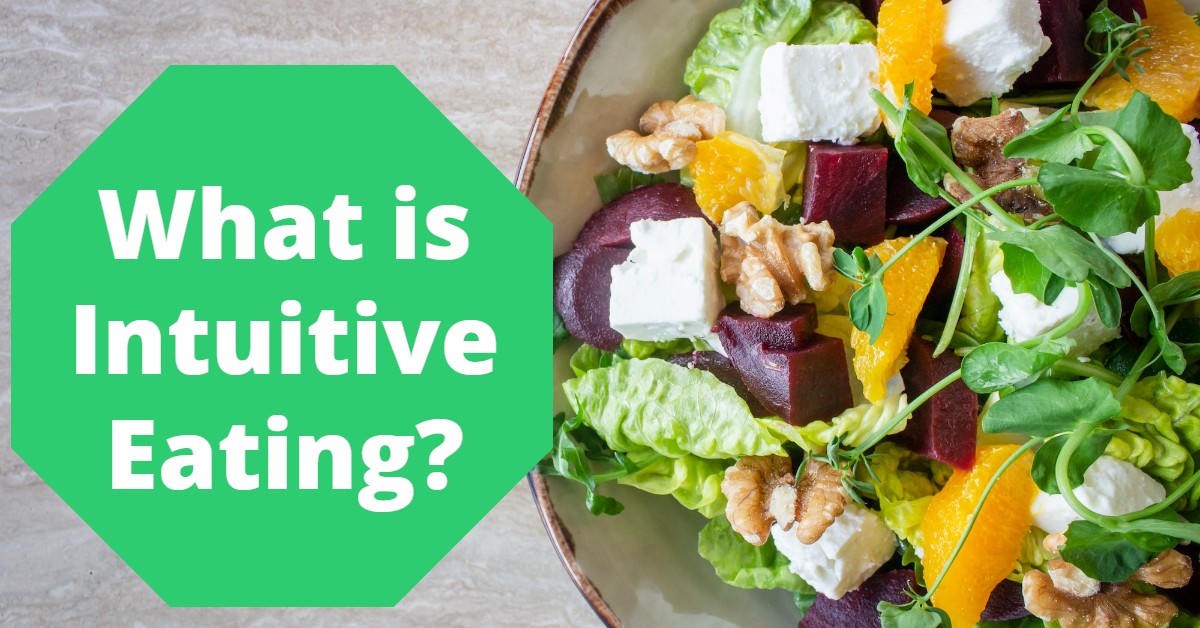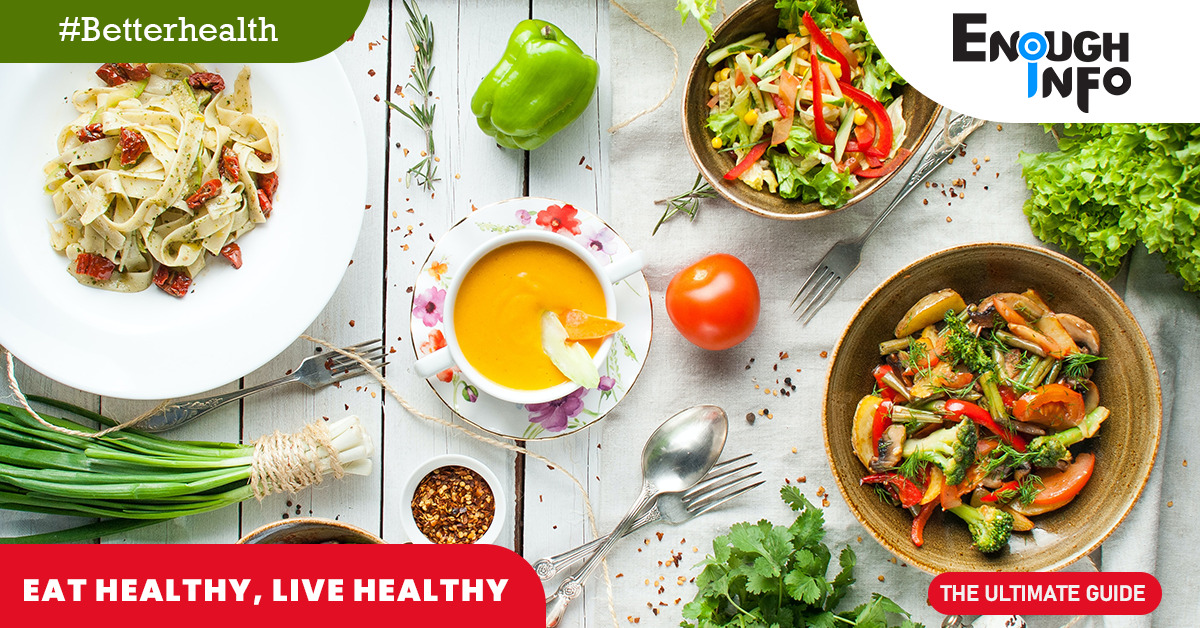What is Intuitive Eating? (10 Benefits to Your Well-being)

You may be interested in knowing What intuitive eating is. How can intuitive eating benefit your well-being? Find out all the information below.

Intuitive eating has been making waves in the health and wellness community lately, and for good reason. While some may dismiss it as just another passing fad, intuitive eating is actually quite different from traditional diets. Amidst the sea of trendy diets, there exists a unique approach to eating that stands out from the rest. In today’s world, there is a growing desire for a lifestyle that is not only kinder and gentler but also more sustainable.
Intuitive Eating: FAQs & Answers
How does intuitive eating differ from traditional dieting?
Intuitive eating differs from traditional dieting in that it does not involve restrictive eating patterns or strict rules around food. Instead, intuitive eating encourages listening to your body’s natural signals for hunger and fullness and making food choices based on what feels good and satisfying.
Is intuitive eating suitable for everyone?
Intuitive eating is suitable for most people, but it may not be appropriate for individuals with certain medical conditions that require strict dietary restrictions. It’s important to consult with a healthcare professional if you have any concerns about your dietary needs.
How can I get started with intuitive eating?
To get started with intuitive eating, it’s helpful to familiarize yourself with the 13 principles of intuitive eating and begin practicing listening to your body’s signals for hunger and fullness. It may also be helpful to work with a registered dietitian or therapist who specializes in intuitive eating.
What is Intuitive Eating, and how it can benefit your well-being
People are becoming increasingly aware of the impact their actions have on the environment and are seeking ways to reduce their carbon footprint. Whether it’s through choosing eco-friendly products, reducing waste, or adopting a plant-based diet, there are many ways to live a more sustainable lifestyle. By making small changes in our daily lives, we can all contribute to a healthier planet and a brighter future.
What is Intuitive Eating?
According to Wikipedia, intuitive eating is an approach to eating that focuses on the body’s response to cues of hunger and satisfaction.
Intuitive eating is a philosophy that encourages individuals to listen to their body’s hunger and fullness cues and to eat in response to those cues rather than following external rules or diets. The goal of intuitive eating is to create a healthy relationship with food, free from guilt, shame, or restriction, and to honor one’s body’s needs for nourishment and satisfaction.
Intuitive eating involves rejecting diet culture and its emphasis on weight loss and restrictive eating patterns and instead focusing on building a positive relationship with food and one’s body. This can involve techniques such as mindful eating, where individuals pay attention to their physical and emotional sensations while eating, and eating for pleasure and satisfaction rather than just for nutrition.
Intuitive eating also emphasizes the importance of self-care, including getting enough sleep, managing stress, and engaging in physical activity that feels enjoyable and energizing rather than punishing or obligatory.
12 Guidelines for Intuitive Nutrition
1. Reject the diet mentality
The first principle of intuitive eating is to reject the diet mentality. This involves letting go of the idea that certain foods are “good” or “bad” and that weight loss is the ultimate goal. Instead, you should focus on your own internal cues for hunger and fullness and eat in response to those cues. This means not restricting yourself from any particular food group or following any specific diet plan.
2. Honor your hunger
The second principle of intuitive eating is to honor your hunger. This involves learning to recognize and honor feelings of hunger rather than ignoring or suppressing them. This may involve eating regularly throughout the day and not skipping meals or snacks.
3. Make peace with food
The third principle of intuitive eating is to make peace with food. This means giving yourself unconditional permission to eat all foods without guilt or shame. This means allowing yourself to enjoy your favorite foods and not feeling deprived.
4. Challenge the food police
The fourth principle of intuitive eating is to challenge the internal voice that tells you what you “should” or “shouldn’t” eat. This may involve questioning the rules and beliefs you have about food and weight and recognizing that these beliefs are often based on external messages rather than your own internal cues.
5. Respect your fullness
The fifth principle of intuitive eating is to respect your fullness. This involves learning to recognize and respect feelings of fullness and stopping eating when you are satisfied rather than overeating or restricting.
6. Discover the satisfaction factor
The sixth principle of intuitive eating is to discover the satisfaction factor. This involves finding pleasure and satisfaction in the eating experience rather than just focusing on nutrition. This may involve savoring food, enjoying the social aspects of eating, and trying new foods.
7. Honor your feelings without using food
The seventh principle of intuitive eating is to honor your feelings without using food. This means learning to cope with emotions and feelings without turning to food for comfort or distraction. This may involve finding alternative ways to cope, such as meditation, exercise, or talking to a friend.
8. Respect your body
The eighth principle of intuitive eating is to respect your body. This means recognizing and accepting your body’s natural size and shape and treating your body with kindness and care. This may involve practicing self-care activities such as getting enough sleep, engaging in physical activity that feels good, and taking care of your mental health.
9. Exercise and feel the difference
The ninth principle of intuitive eating is to exercise and feel the difference. This involves finding physical activities that you enjoy and that make you feel good rather than punishing or obligatory exercise. This may involve trying new activities, such as dance, yoga, or hiking, and learning to listen to your body’s signals for rest and recovery.
10. Honor your health with gentle nutrition
The tenth principle of intuitive eating is to honor your health with gentle nutrition. This involves making food choices that honor your taste preferences and hunger and fullness cues while also recognizing the importance of nutrition for overall health. This may involve seeking out a variety of foods that provide a balance of nutrients and experimenting with new recipes and flavors.
11. Honor your body’s biological rhythms
The eleventh principle of intuitive eating is to honor your body’s biological rhythms. This means recognizing that your body has natural cycles of hunger, fullness, and energy levels and learning to listen to and respect these rhythms. This may involve eating when you are hungry, resting when you are tired, and finding ways to reduce stress and promote relaxation.
12. Respect your social health
The twelfth principle of intuitive eating is to respect your social health. This involves recognizing the importance of social connection and enjoyment in the eating experience. This may involve sharing meals with friends and family
How Intuitive Eating Benefits Your Well-being
-
Improved relationship with food: Intuitive eating can help you establish a more positive and sustainable relationship with food by removing strict rules and restrictions.
-
Reduced risk of disordered eating: Intuitive eating can help you break free from unhealthy eating patterns like binge eating or restrictive dieting, reducing the risk of disordered eating.
-
Better digestion: By eating when you’re truly hungry and stopping when you’re comfortably full, you can improve digestion and reduce the likelihood of digestive discomfort.
-
Increased satisfaction with meals: By allowing yourself to eat what you truly enjoy, you may experience increased satisfaction with your meals.
-
Improved relationship with exercise: Intuitive eating can help you establish a healthier and more sustainable relationship with exercise by focusing on how it feels rather than how many calories it burns.
-
Increased self-esteem: Intuitive eating can improve self-esteem by shifting the focus away from weight loss and towards self-care and self-acceptance.
-
Improved physical health: By making food choices that align with your body’s needs, you can improve physical health outcomes like blood pressure, cholesterol, and blood sugar.
-
Reduced guilt and shame around food: Intuitive eating can help reduce feelings of guilt and shame around food by allowing you to eat without judgment or restriction.
-
Better sleep: Eating in a way that’s aligned with your body’s needs can help regulate hormones and improve sleep quality.
-
Greater enjoyment of life: Intuitive eating can help you feel more present and connected to your body, leading to greater enjoyment of life and daily activities.
Conclusion
In conclusion, intuitive eating is a practice that promotes a positive relationship between food and the body. Follow the 12 principles of intuitive eating. Learn to trust your internal cues for hunger and fullness. Make peace with food, and honor your body’s natural rhythms.
Intuitive eating can lead to improved physical and mental well-being. This includes better digestion, increased energy levels, and reduced feelings of guilt or shame around food. It can also lead to improved self-esteem and body image. And also a more positive relationship with food and exercise.
Overall, intuitive eating is a sustainable and enjoyable way to approach nutrition. It can have a significant impact on your overall health and well-being.
Recommended:
15 Effective Tips For Creating Value For Your Customers
Top Healthy Foods To Eat Everyday (2023 Guide)
24 Best Energy-Boosting Foods (All You Need To Know)




